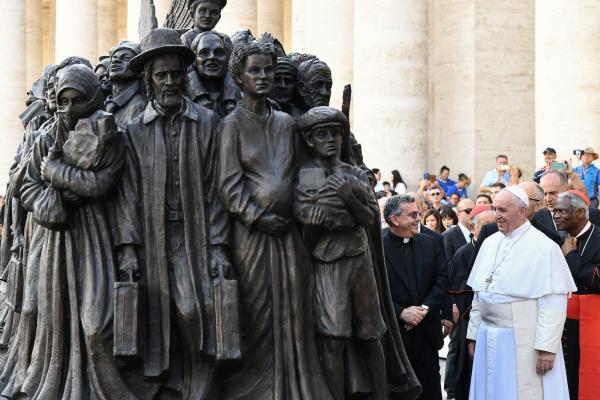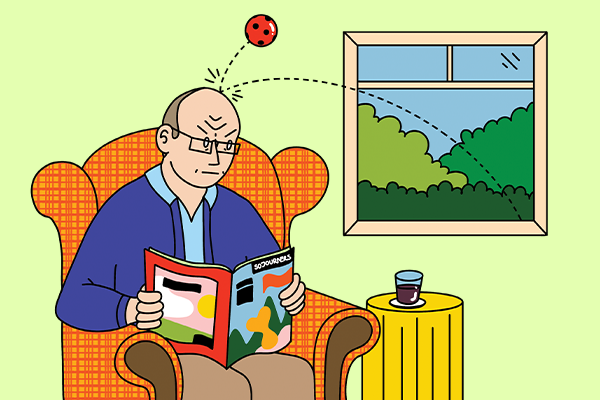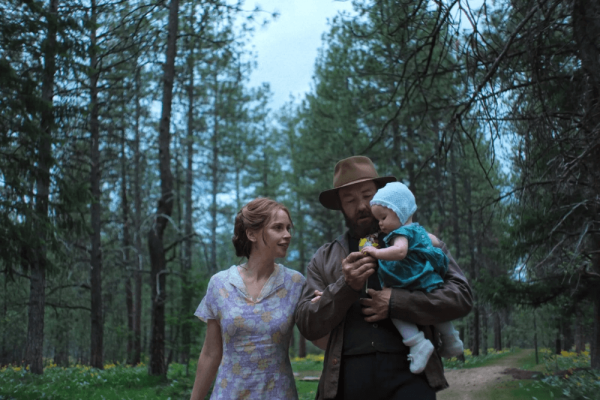Editors note: This is part one of an eight-part series exploring the eight Jesus questions all of us must face, highlighted in Jim Wallis's new book Christ in Crisis: Why We Need to Reclaim Jesus (HarperOne), available now. These next eight weeks will help us go deeper than the headlines, to find our way back to Jesus in the midst of this intensive and exhausting news cycle.
Want to hear this in an audio format instead? We just launched an eight-episode podcast series called Reclaiming Jesus Now that features Allison Trowbridge and William Matthews speaking with Jim Wallis about these questions and their relevance today.
Who is my neighbor? It’s a question that was famously asked of Jesus, which prompted him to tell perhaps his most famous parable — the story of the Good Samaritan.
This may be the most important question for our nation’s future.
The answer to this question refutes and undermines the fear and hate that animates so much of our political life in the era of Donald Trump.
As we explored the neighbor question in our new podcast called Reclaiming Jesus Now, William Matthews, a co-host along with Allison Trowbridge, said: “One of the most disheartening things, watching this current administration and the support the president garners, is that it feels like an outright rejection of the neighbor.”
William is right.
Just this week we’ve gotten disturbing new documentation on the depth of Donald Trump’s antipathy for migrants seeking a better life, and the lengths to which he’s willing to go to show his supporters how “tough” he is on the U.S.-Mexico border. According to The New York Times:
“Privately, the president had often talked about fortifying a border wall with a water-filled trench, stocked with snakes or alligators, prompting aides to seek a cost estimate. He wanted the wall electrified, with spikes on top that could pierce human flesh. After publicly suggesting that soldiers shoot migrants if they threw rocks, the president backed off when his staff told him that was illegal. But later in a meeting, aides recalled, he suggested that they shoot migrants in the legs to slow them down. That’s not allowed either, they told him.”
This is clearly not a man who has taken any time to understand Jesus’ answer to the lawyer’s famous question in Luke 10:25-37, “And who is my neighbor?”
Most of us know the story well: A lawyer asks Jesus what he must do to inherit eternal life. Jesus asks him what the law says, and the lawyer gives the correct answer: Love God and love your neighbor as yourself. But then the scripture says that the lawyer, “seeking to justify himself” and seeking to narrow the scope of his responsibility, asks Jesus, “And who is my neighbor?”
Jesus’ response is the story of the Good Samaritan, which is too often understood and interpreted by Christians today as merely a story about the importance of self-sacrifice, mercy, and compassion for others.
These traits are important for followers of Jesus, but to end our exploration of the passage there is to miss an urgent lesson for our current moment.
The crux of the “Neighbor Question” revolves around who Jesus chose to lift up as the example of what being a neighbor really means.
To Jesus’ audience at the time, there were no “good” Samaritans. For the Judeans of Jesus’ time, the Samaritans were a despised mixed race, and the Judeans thought of and treated them as “others” who they did their best to avoid. So what Jesus is doing in making the neighbor a Samaritan is teaching the lawyer and the rest of his audience that the test of loving your neighbor as yourself lies in how you treat people who are different from you. Remember, the man who fell among robbers was an “other” to the Samaritan, too.
I firmly believe that, when Jesus’ lesson of difference becomes the measure of who our neighbors are and how we treat them, this story can change cultures and even politics.
And there is no doubt that our culture and our politics need changing in this moment.
Our failure to recognize and love our neighbors as ourselves is at the root of anti-immigrant and anti-refugee sentiments and policies all over the world. Yet, since the ascension of Trump, these anti-neighbor politics are more dangerous than ever.
We have a situation in the United States today where the president and his followers are essentially saying, “Those people who are different from you are not your neighbors. You don't have to love them — in fact you can hate them. You can tell them to go back where they came from.”
How can so many white Americans, most of whom call Jesus “Lord,” be so disconnected from the meaning and implications of perhaps Christ’s most famous teaching?
Or, as Allison Trowbridge asked in this week’s podcast episode, “So much of Trump's campaign towards the evangelical base was around fear of the other, building walls, and anti-immigration. How has that so resonated with a portion of the American church, and how is he able to rally so many white evangelical voters?”
I think this is a question on a lot of our minds.
Unfortunately, a big part of the answer to that question is whiteness, as manifested in the structural forces of white privilege and white supremacy. White Americans have separated themselves geographically from people of color for more than a century as a matter of public policy. Despite the end of explicit Jim Crow laws, as a result of the mid-century civil rights movement, well-documented practices in housing, banking, school systems, and more have resulted in a segregated racial geography across much of the country, which is mutually reinforced by social behavior.
It’s a tragic fact that 75 percent of white Americans have no people of color in their social circles outside of work. Dr. Martin Luther King Jr.’s observation that 11 o’clock on Sunday morning is the most segregated hour of the week is still largely true. And if you’re only in a world that looks like you, then you aren’t going to understand Jesus’ answer to the question “And who is my neighbor?”
Disrupting our racial geography, disrupting the pathways of our lives to find our neighbors who are different from us, and cultivating genuine relationships across boundaries is an important part of learning to truly love our neighbors as ourselves.
We need to internalize and exemplify Gustavo Gutiérrez’s brilliant insight about the Good Samaritan: “Who is my neighbor? The neighbor was the Samaritan who approached the wounded man and made him his neighbor. The neighbor ... is not he whom I find in my path, but rather he in whose path I place myself, he whom I approach and actively seek.”
Being a neighbor means going outside our paths. And if we want to reclaim Jesus in this moment, then loving our neighbors — the ones outside our path — is where we must start.
Got something to say about what you're reading? We value your feedback!







